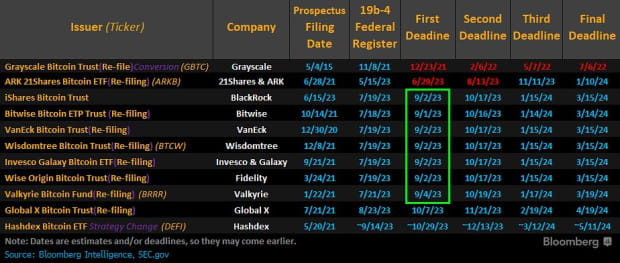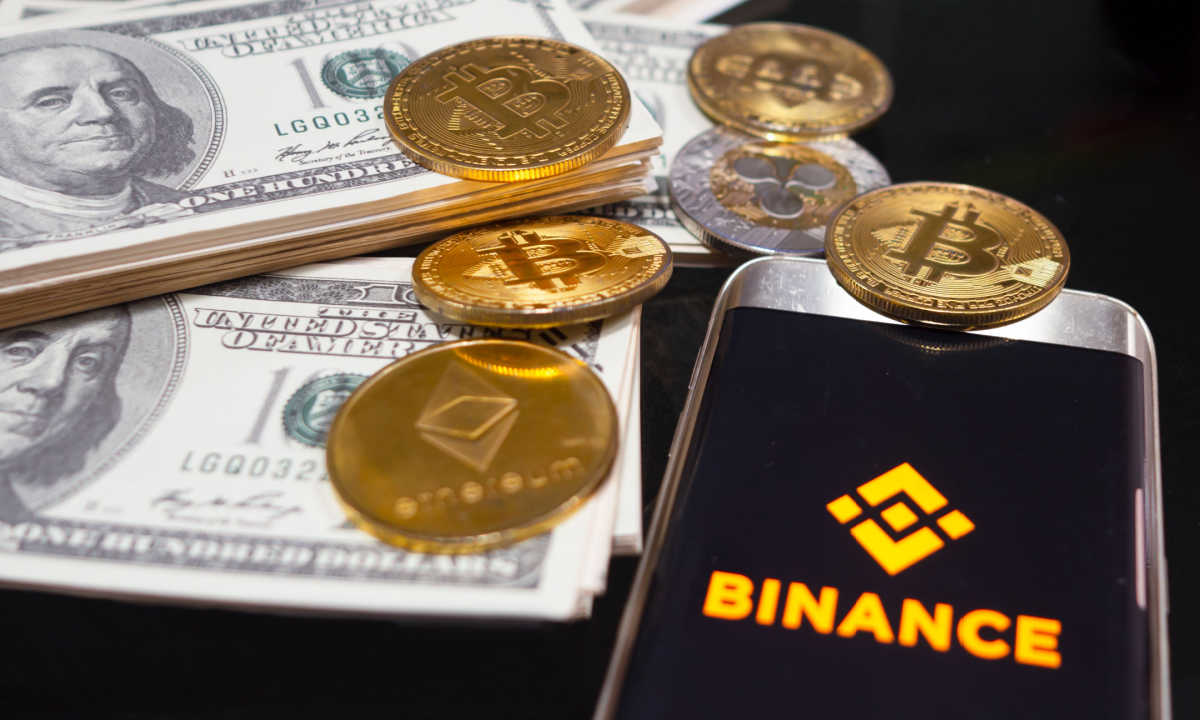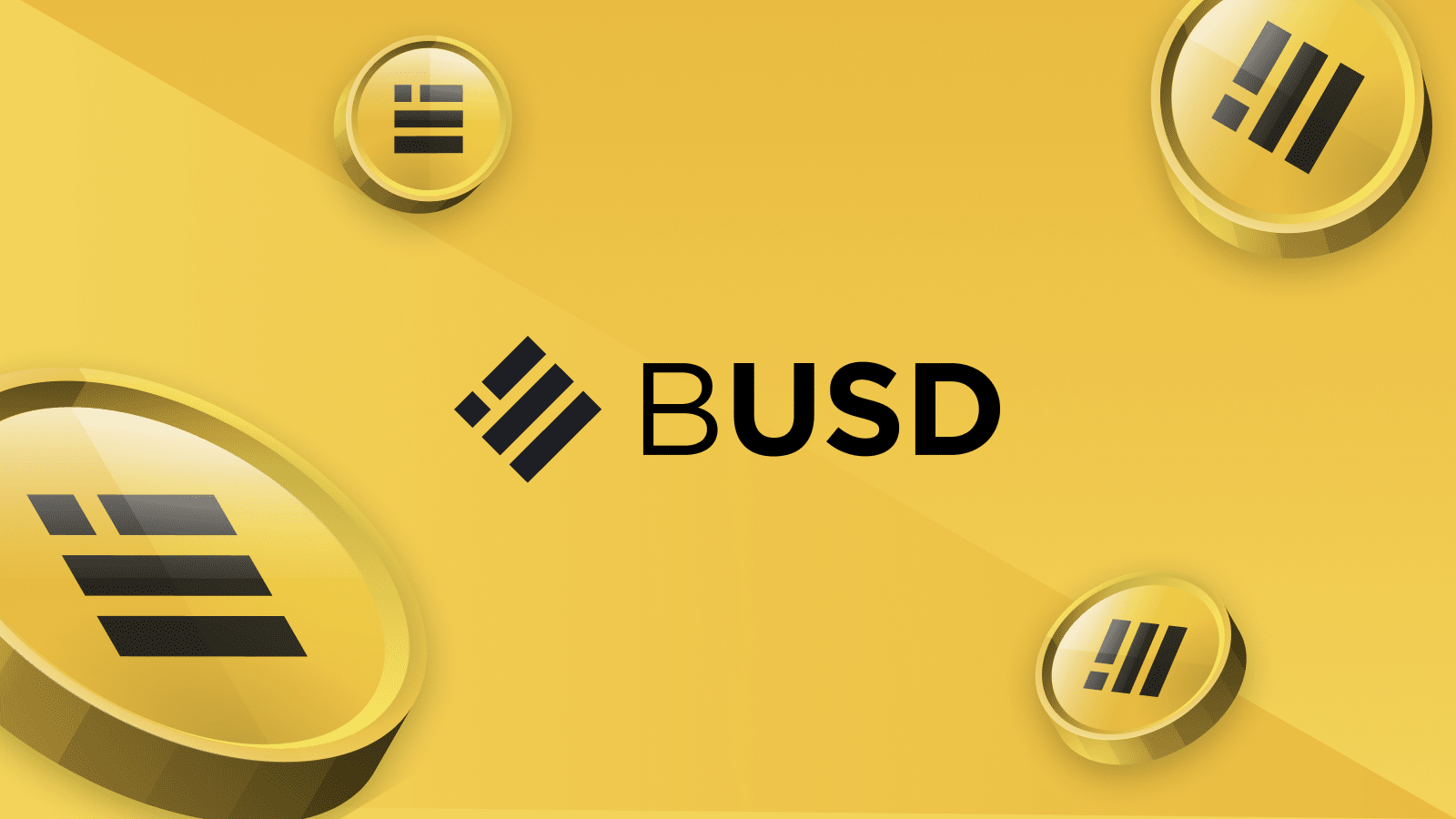Earlier this 12 months, Ordinals — a singular inscription on the smallest unit of a Bitcoin, known as a Satoshi — emerged as a controversial new improvement. Dismissed by some as spam and embraced by others as a option to convey BRC-20 tokens and NFTs to Bitcoin, the expertise stimulated a flurry of developments.
Now there’s pleasure round “recursive inscriptions,” which is a really complicated but probably far more highly effective improvement. Recursive Inscriptions basically promise to permit extra complicated performance to be constructed on Bitcoin’s blockchain, akin to sensible contracts on Ethereum.
Some imagine recursive inscriptions may see Ordinals develop from NFTs and “digital artifacts” to underpin a full-blown DeFi ecosystem on Bitcoin very quickly. Others are assured it is going to allow Bitcoin to tackle decentralized storage supplier IFPS. One particular person Journal spoke to believes it is going to finally result in an interconnected supercomputer being constructed on-chain.
Danny Yang, a Stanford PhD, creator of OCM Dimensions and Bitcoiner since 2013, says recursive inscriptions unlock the following evolution of Bitcoin:
“Folks gained’t imagine it when it’s introduced to them now. It’s not going to function precisely like Uniswap, however different high-value digital property will emerge on Bitcoin. That’s what Ordinals and recursive inscriptions will evolve into. They’ll grow to be a brand new type of programmable property and code.”
These tech developments — whereas at a really early and speculative stage — are making Bitcoin attention-grabbing once more. A Bitcoin maxi pal complained to me that I by no means write about Bitcoin. In fact, there’s been little or no new to write down about till not too long ago.
“That’s fairly true,” Yang agrees.
Recursive help switched on in June
Yang has labored on recursive inscriptions since February within the type of Bitcoin generative NFT collections OCM Dimensions and OCM Genesis. He inscribed each of these revolutionary collections on Bitcoin in February (together with compression and 3D programming libraries) earlier than anybody understood the importance of what he had completed.
But OCM Dimensions was solely publicly launched on June 15, the day that recursive inscription help was turned on for Ordinals.com. Yang explains to Journal:
“You must present one thing earlier than folks begin listening, and eventually, after months of beating the drums concerning the significance of recursive inscriptions on Bitcoin, individuals are beginning to get it after we confirmed what was potential with OCM Dimensions — the primary 3D, excessive decision, animated and interactive work on Bitcoin.”
For now, the sensible contract-enabled Ethereum blockchain is the house of extra developer exercise than wherever else, and it dominates the DeFi sector. Till this 12 months, the concept of constructing a real sensible contract — the self-executing code used as constructing blocks for programmable cash ecosystems — was not potential on Bitcoin.
However some now say Ordinals and recursive inscriptions may see a DeFi ecosystem emerge on Bitcoin pretty quickly. It’s not going to be simple, although.
What are Ordinals and recursive inscriptions?
Ordinals help you uniquely establish a satoshi or a sat. A satoshi is 100 millionth of a Bitcoin. Figuring out a fractionalized a part of a Bitcoin means creating NFTs on Bitcoin or making a provenance certificates on-chain is now potential. The concept of NFTs on Bitcoin, probably the most decentralized OG chain, is tantalizing for some.

In January 2023, developer Casey Rodarmor launched the Ordinals protocol, creating Bitcoin NFTs on the Bitcoin blockchain. Rodarmor discovered an unintended loophole within the taproot scripts that command traces of Bitcoin code.
The Ordinals’ protocol creator argues that such NFTs are actually “full,” because the token and associated photographs are saved on the Bitcoin blockchain fairly than facet chains or utilizing off-chain storage techniques like most Ethereum NFTs. Digital artifacts on Bitcoin are actually immutable.
“Now you’ll be able to personal the precise artwork, not only a contract that factors at a bit of artwork saved on centralized databases,” says Carlo Fox, an “Ordinals OG” since February who created the Nakamoto Whales collection. NFTs, as we all know them on Ethereum and on different chains, are extra like digital possession certificates than precise on-chain artwork, and Ordinals change that.
“I received tremendous excited for Ordinals for just a few causes: for one, we now can create and personal on-chain artwork that’s actually immutable. If you perceive the ramifications of this, it’s big. Half the time, NFTs as we all know them are saved on AWS, centralized, and managed by creators who can flip your artwork into photos of turds at any time.”
Ordinals help you retailer any sort of knowledge on probably the most decentralized blockchain, and nobody can modify it. “Ordinal artifacts could also be most definitely of any on-chain knowledge to exist 2,000 years from now. That’s significant, and I believe it’s significantly related when within the context of necessary artworks, literature and science. I imagine that Ordinals will grow to be the premiere vacation spot for probably the most coveted and necessary on-chain artwork. It’s akin to carving a statue out of gold,” says Fox.
So the enterprise case for high-value NFTs minted on Bitcoin is smart. Utilizing the brand new tech to create cool 3D artwork for OCM Dimensions helped Yang’s firm Metagood promote the concept of launching tokens on Bitcoin Ordinals to Asprey Studios and the Italian automotive firm Bugatti not too long ago.
However OG Ordinals may solely maintain 4MB of knowledge, and that’s one cause why recursive inscriptions have emerged.

Recursive inscriptions = Bitcoin cloud computing
At its most elementary recursive inscriptions allow you to report stuff related to a specific Bitcoin and allow sensible contract-type performance — Yang says they might have been known as programmable inscriptions. By interlinking knowledge by way of a collection of calls (a contract for a promote order, for instance), it’s potential to extract that knowledge to run extra complicated processes anchored on Bitcoin blocks.
This allows recursive inscriptions to perform like a distributed knowledge repository, like placing AWS cloud on Bitcoin.
Composability — getting disparate initiatives and protocols to work collectively seamlessly — is a crucial a part of crypto and one of many major causes behind the exponential progress of the Ethereum DApp ecosystem.
Recursive inscriptions imply that even probably the most complicated knowledge units, like video information and audio information, may now technically be hosted on Bitcoin. With a one-time value to inscribe, knowledge could possibly be hosted perpetually on probably the most immutable and decentralized community on this planet.

Inscriptions are like knowledge legos, enabling knowledge to be taken from someplace else and constructed upon. In laptop science, that’s the place the phrase recursive comes from, as recursive inscriptions are a mechanism that extracts knowledge from current inscriptions and makes use of that knowledge inside new inscriptions.
Recursion is a completely on-chain course of that makes use of scripts to mix varied different on-chain knowledge sources. These can embrace picture layers, audio, code or different knowledge sources. Particular person scripts of code merge these layers collectively by way of recursion.
Recursive inscriptions use knowledge inscribed elsewhere on new inscriptions, slicing down on storage necessities.
Fox makes use of the instance of PFP artwork. As a substitute of importing 1000’s of distinctive photographs (which may be prohibitively costly), you’ll be able to add 200 and use scripts to mix them by way of the absolutely on-chain recursion course of. The chances this gives are solely simply being explored.
That is highly effective as a result of recursive inscriptions allow new varieties of functions that weren’t potential earlier than it. Purposes like on-chain AI couldn’t be completed on the bottom layer of Ethereum, however NewBitcoinCity builder Punk 3700 believes they might now be completed on Bitcoin. He’s been taking part in round with “Perceptrons,” an early on-chain AI experiment on Bitcoin.
He explains that “it wasn’t potential to retailer the AI neural internet fashions on-chain along with the artworks. So we cut up the AI fashions into completely different inscriptions and compose them at runtime.”
Inscriptions an necessary improvement for human freedom?
One of the crucial fascinating components of recursive inscriptions is that after the information is on the blockchain as soon as, you’ll be able to merely confer with it time and again, vastly slicing down storage prices and block house utilization.
“Inscriptions are actually reusable,” explains Punk 3700, “You may inscribe a really giant code library like p5.js as soon as, and different builders can reference that p5.js library at run time with out inscribing it once more.”
“That is tremendous thrilling as a result of we begin seeing a community-driven public infrastructure being constructed out.” This implies extra complicated inscriptions are being created at a fraction of the fee.
“Basically, any sort of knowledge may be an inscription. Probably the most rudimentary use case combines a number of knowledge sources collectively, and every bit of it could stay on-chain. On-chain knowledge would possibly be capable to talk with one another, and knowledge could possibly be realized over time.”
Fox explains additional: “The easiest way to think about it’s something you are able to do domestically on a pc and have all little items stay collectively in several information and work collectively.”
He provides examples like “open-source libraries, all on-chain,” that means necessary analysis papers on Bitcoin, with citations on recursions on-chain, that means main discoveries may be revealed on Bitcoin blocks for time immemorial. Javascript packages may be inscribed on Bitcoin. Basically, a tiny web that’s developed to stay on Bitcoin can’t be taken down, constructing and constructing till someday it has created “an interconnected supercomputer dwelling on Bitcoin.”
The general public hasn’t grasped the importance of those developments, says Fox.
Let’s begin with DeFi and AWS first
Lengthy earlier than the supercomputer cranks up, we’re prone to see Bitcoin DeFi and the chain emerge as a knowledge storage competitor.
Toby Lewis co-founded OrdinalsBot, which automates inscriptions to assist expedite improvement on Ordinals. He thinks that, for now, competing with the Web3 knowledge storage supplier IPFS is the perfect use case for recursive inscriptions. Within the brief time period, each high-end and low-end NFTs can now be extra affordably held on-chain.
“The top level of storing knowledge onto Bitcoin will get folks excited. That’s as a result of Bitcoin has higher identify recognition than IPFS […] Bitcoin turns into the final word retailer of reality.”
Decentralized knowledge storage on Bitcoin may disrupt NFT tradition by permitting photographs, textual content information and audio information to be saved straight with tokens.

Lewis additionally thinks DeFi on Bitcoin is simply turning into a sensible prospect now and that Bitcoin-native DeFi merchandise are inevitable, even when they are going to be rudimentary for some time.
There’s seemingly a big phase of customers who will wish to construct and do one thing on Bitcoin, particularly if the top state is a multichain ecosystem, posits Lewis. That’s, use Bitcoin’s blockchain because the layer-1 base, and use Ordinals and recursive inscriptions to connect with different functions.
DEXs and automatic market makers are beginning to emerge. Lewis notes that Bitcoin can hyperlink as much as different layer-2 functions as one other method for sensible contracts to emerge on Bitcoin.
That is the type of DeFi that Punk 3700 has been constructing on Bitcoin. He launched a brand new protocol known as Trustless Pc that allows writing sensible contracts and constructing DApps on Bitcoin.
“If Ethereum and Bitcoin have a child, that’s Trustless Pc.”
One of many first DeFi protocols it deployed was a Uniswap fork.
“Now that you could possibly write sensible contracts on Bitcoin, it turned out that constructing an AMM DEX was quite simple. It took us simply a few days.” A month after deploying Uniswap on Bitcoin, Punk 3700 related it to Ethereum layer-2 community Optimism and says it could commerce with two-second latency and low transaction charges.
“We now have a scalable infrastructure for DeFi to thrive on Bitcoin.”
Learn additionally
Bitcoin maximalists aren’t going to love using Ethereum protocols at the side of Bitcoin, however Punk 3700 says it’s the longer term.
“That is the ability of getting a general-purpose programming language (Solidity) and a general-purpose digital machine on Bitcoin. Builders can construct any sorts of functions they need for Bitcoin.”
“Bitcoin is now not only a forex. It’s turning into a DApp retailer.”
New era of Bitcoin maxis?
At current, these use instances for recursive inscriptions and sensible contracts on Bitcoin are extremely speculative, and plenty of Bitcoiners would little doubt argue abstracting it away on layer 2s means it’s not actually Bitcoin in any respect.
However Leonidas, the founding father of Ordinals market Ord.io, could be very excited concerning the new Web3 experiments on the Bitcoin layer 1 as properly. He believes that “the discharge of the Ordinals protocol earlier this 12 months ended an extended interval of stagnation” for the chain. He’s seeing an entire new wave of builders flood into the Bitcoin ecosystem, who’re “keen to construct every part from NFT marketplaces to DeFi protocols.”
“I believe folks might be pleasantly stunned with how a lot you’ll be able to truly do on Bitcoin layer 1,” he says.
“The problem was by no means that Bitcoin as a expertise wasn’t able to dealing with Web3 use instances; it’s {that a} tradition of poisonous maximalism had pushed probably the most gifted builders to different ecosystems the place they’d be celebrated for his or her improvements fairly than harassed.”
Leonidas firmly believes that by way of Ordinals, Bitcoin has “entered a brand new period the place builders fairly than idealists will dictate its future,” and he’s optimistic that Bitcoin’s brightest days lay forward.
Subscribe
Probably the most participating reads in blockchain. Delivered as soon as a
week.











![Methods to Purchase DeFi Pulse Index on CoinStats [The Ultimate Guide 2022]](https://bitrrency.com/wp-content/uploads/2022/05/DeFi_Pulse_og-100x70.png)

